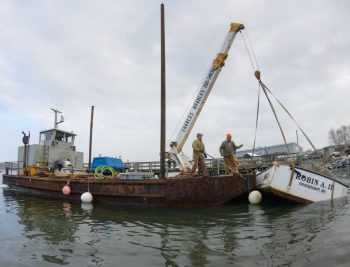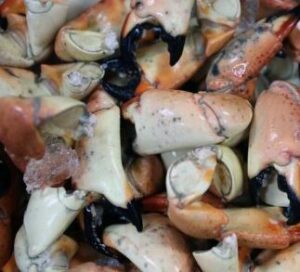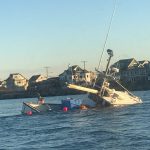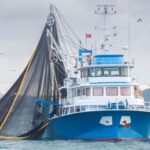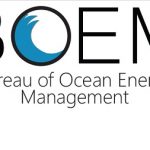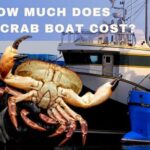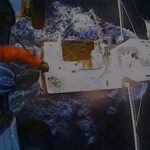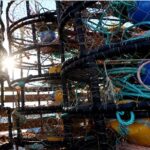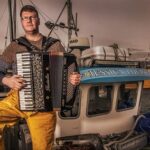Monthly Archives: December 2018
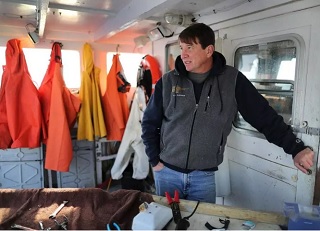
First major offshore wind project in jeopardy of being blocked
The warming waters south of Cape Cod have decimated the region’s lobster fishery. But it’s an ambitious effort to fight climate change that has lobstermen like Lanny Dillinger concerned for their livelihoods. Dillinger worries that the nation’s first major offshore wind farm, planned for the waters between Martha’s Vineyard and Block Island — a $2 billion project that will set precedents for the future of wind power in the United States — will transform the area into a maze of turbines and make it too treacherous to fish. As a result, Dillinger and the rest of the Rhode Island Fishermen’s Advisory Board took a unanimous vote last month that could threaten the project, which was designed to supply electricity to Massachusetts, and the Baker administration’s plans to curb carbon emissions. >click to read<11:05

Congress passes bill that will allow killing of sea lions to help salmon
Congress has agreed to make it easier to kill sea lions threatening fragile runs of salmon in the Northwest. Oregon Public Broadcasting reports that a bill approved by the House Tuesday changes the Marine Mammal Protection Act to lift some of the restrictions on killing sea lions to protect salmon and steelhead in the Columbia River and its tributaries. The measure had previously passed the Senate. Wildlife managers say sea lion populations have grown so large that they no longer need all the protections that were put in place for them in 1972. >click to read<10:14
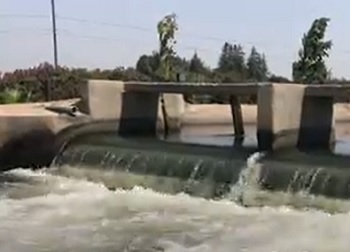
California shifts water from farms, cities to fish.
Despite an epic last-minute compromise brokered by Gov. Jerry Brown, state water regulators voted Wednesday to reallocate billions of gallons of San Joaquin River water from farms and cities to revive struggling fish populations. After hours of testimony, the State Water Resources Control board voted to deliver hundreds of thousands of acre-feet of water from the San Joaquin watershed to salmon, steelhead and other species that ply the fragile Delta. The vote will eventually take water from Valley farmers, who have blasted the plan as a “water grab,” as well as cities such as Modesto and San Francisco. >click to read<09:52
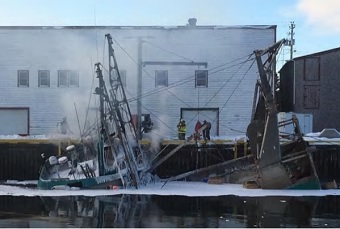
Toxic smoke, heavy flames swallow up fishing vessel in Grand Bank
They did everything they could, but firefighters in Grand Bank couldn’t keep the Marcel Angie II above water on Tuesday. The fire started on board the vessel, tied up on a new section of the town’s wharf, just before 10 a.m. Fire Chief Tony Snook said the crew spent the morning fighting the fire on board the boat, but had to pull back due to the chemical smoke coming from melting fibreglass. “The toxic smoke was getting intense and I was losing visibility of some of the firefighters on deck, so we pulled them off for safety reasons and began to fight the fire on shore,” Snook told CBC News. The boat is from St. Pierre but has fished between Grand Bank and Fortune for at least 17 years, Snook said. >click to read<20:24
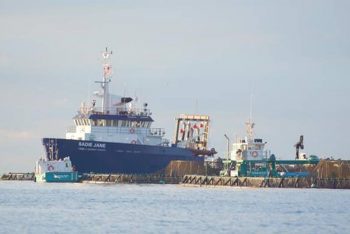
Fast-expanding seafood giant joins Irvings, McCains as N.B. business royalty
For the Irvings, it was Bouctouche. For the McCains, Florenceville. Now, in tiny Black’s Harbour, in between an Irving gas bar and the local Freshmart, is a small, two-storey brick building that is head office for New Brunswick’s newest family-owned multinational. Cooke Aquaculture Inc. is the world’s largest independent seafood company, with billions of dollars in annual revenue, shipping one billion pounds of fresh seafood annually to 67 countries. And it is about to get bigger. Founded 33 years ago, the firm is set to complete its latest acquisition, growing its global workforce to some 9,000 employees. >click to read<19:23
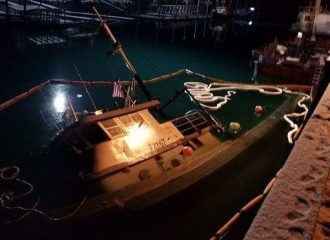
Fishing vessel sinks, leaks fuel in Seward Harbor
The weekend sinking of a fishing vessel in the Seward Harbor has prompted a cleanup effort as plans to salvage the vessel unfold. The Alaska Department of Environmental Conservation said in a report that it is monitoring the response to the Nordic Viking, which sank at the “T-dock” in the Seward Harbor and was reported to DEC Sunday by the local harbormaster. It’s not clear why the ship sank. >click to read<17:44
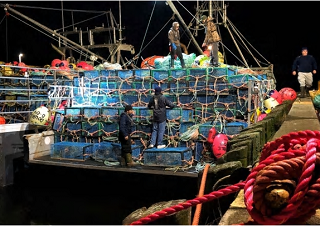
Early reports suggest steep decline in lobster catch in southwest N.S.
The lobster fishery in southwest Nova Scotia is only into the second week of its season, but already fishermen are finding a decreased haul compared to last year. Lobster fishing areas 33 and 34 are the most lucrative in the province, with overall exports of nearly a billion dollars last year. But the federal Fisheries Department said preliminary reports from fishermen suggest the catch has declined significantly. >click to read<16:46
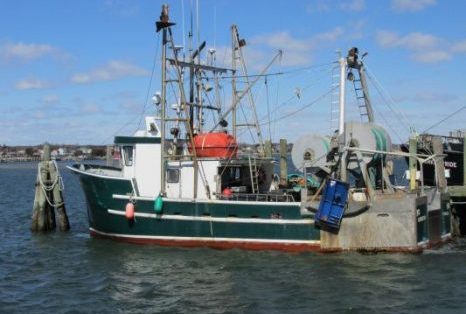
Athearn Marine Agency Boat of the Week: 55′ Fiberglass Dragger, 425HP Cummins, 20 KW Genset, Complete main engine rebuild
Specifications, information and 53 photos >click here< To see all the boats in this series, >Click here< Vessel is in excellent condition. November 2017: Complete main engine rebuild. 14:09
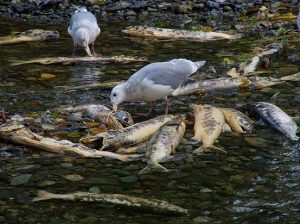
Desperately seeking chum salmon returns
The Squamish, Mamquam, Cheakamus and Elaho rivers sustain four varieties of Pacific salmon: coho, chinook, pink and chum. The latter is popular for smoking and canning. Chum flesh and eggs are often exported, primarily to Asia, while domestic uses include animal food and bait. Regarding value on the market, chum are perhaps the least desirable salmon, but their role in the environment—including sustaining other types of salmon as well as mammals and even vegetation—make them a harbinger of environmental health or crisis. “They make the whole ecosystem tick,” said Dave Brown, chair of the Sea to Sky Fisheries Roundtable and vice-chair of the Squamish Lillooet Sportfish Advisory Committee. “They ask very little of the resource.” While other salmon may remain in the river for two to three years, relying on the largesse of the river ecosystem for sustenance as they grow, chum migrate to the ocean as fry, just an inch or two in length. >click to read<13:41
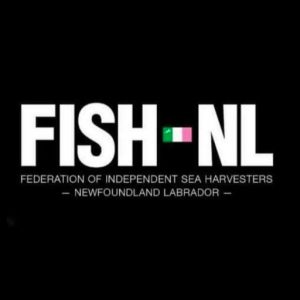
FISH-NL convention set for Jan. 24th in Gander; nominations open for 2018 Inshore Harvester of the Year
The Federation of Independent Sea Harvesters of Newfoundland and Labrador (FISH-NL) has set Jan. 24th, 2019 as the date for its next convention and election of officers at Gander’s Albatross Hotel. As well, to coincide with the convention FISH-NL is announcing the first ever Inshore Harvester of the Year Award. “It’s full-steam ahead for FISH-NL,” says Ryan Cleary, President. “It’s our intention that 2019 will be the year of the inshore harvester, and they’ll finally get the right to choose their labour future.” Elections will be held for FISH-NL’s executive positions — >click to read<12:02
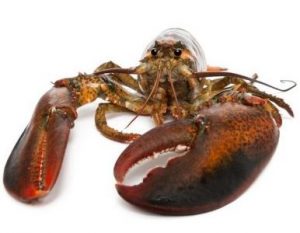
Nova Scotia: Nervous days for the lobster fleet
A pair of websites perpetually run on the computer of Stewart Lamont, managing director of Pleasant Harbour’s Tangier Lobster Co., who had a lot on his mind when I called Tuesday. Environment Canada, naturally, is one of the sites he constantly monitors. Lately the offshore winds, which, if overly strong, could disrupt the provincial lobster fishery that opened on Dec. 2, have been relatively tame. The issue, he explained over the telephone, is water temperature. At the critical mid-shore distance, five or six hours from land, the water Tuesday was less than 4 C, which he calls “an almost unfathomable drop” from around 11 C a year ago. >click to read<10:16
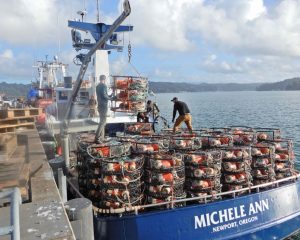
Second delay idles Newport crab fleet
The commercial Dungeness crab season has been pushed back — again — this time to at least Dec. 31 as fishery managers wait for pockets of light crab to come up to par. While some crab need more time to reach the meat content target of 25 percent, the wait has disappointed Newport fishermen who question extending delay when so much of the product is ready to be brought to the docks. Crab from Coos Bay north appear ready for harvest. Tests conducted Dec. 6-9 showed Newport crab at 26 percent meat content,,, Newport fisherman Corey Rock called the delay another example of a limited number of fishermen dictating the terms of the season to the larger fleet. >click to read<09:17
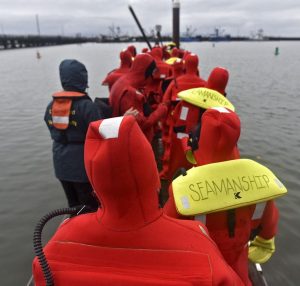
Letter: Celebrate efforts to make commercial fishing safer
I appreciated seeing Colin Murphey’s photography feature showing our local commercial fishing crews engaged in safety training on Nov. 30 (“Fishing — the Most Dangerous Game,” The Daily Astorian) >click to read<. However, the headline struck me as somewhat inappropriate for the content. The Coast Guard holds a drill conductor training here in Astoria three to four times a year, and Oregon Sea Grant helps get fishermen signed up. Amanda Gladics >click to read<08:49
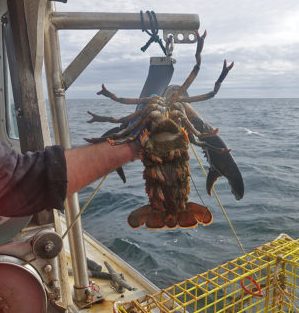
Proposed Cut for Herring Harvest Could Affect Lobster Catch
Fishermen who seek one of the most important bait fish on the East Coast are likely to see a dramatic reduction next year in the amount they are allowed to harvest, and the change could have major implications for lobster consumers. The commercial fishery for herring is a major industry in the Atlantic states, where the little fish is important as lobster bait and is also eaten by people. The fish has been under the microscope of regulators and conservation groups recently after a scientific assessment said earlier this year that the fish’s population has fallen in the past five years. NOAA wants to cut the annual catch limit from nearly 110 million pounds (50 million kilograms) this year to less than half that in 2019. The agency said in a statement that the deep cut is needed to “prevent overfishing.” >click to read<23:16:
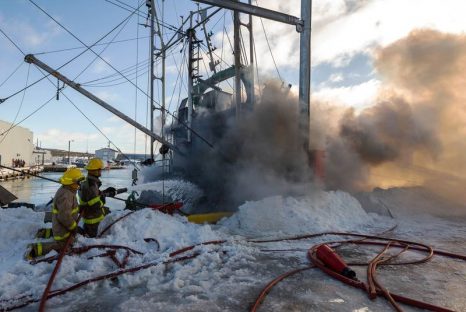
Grand Bank Fire Department called to a fishing vessel fire
The Southern Gazette has learned that members of the Grand Bank Volunteer Fire Department are currently working to extinguish a fire onboard a fishing vessel docked at the wharf in the town. Details as to what started the fire are not readily available at this time. The Southern Gazette is following this story and will have more information as they become available. >link<19:40
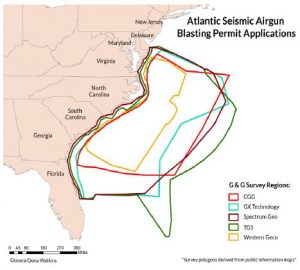
Offshore oil exploration: Can the average citizen make a difference?
To the average American it often seems that our elected leaders, once they get to Washington, D.C., can become somewhat hard-of-hearing to the wants and desires of the voters who sent them there. Such is the case with the recent approval of a permitting process by the National Marine Fisheries Service, which will allow seismic airgun exploration in the Atlantic Ocean off the East Coast of the United States – an activity, experts say, that is extremely hazardous for whales, dolphins, turtles, and other sea creatures. Hundreds of municipalities have already expressed formal opposition to both airgun exploration and offshore drilling, as have hundreds of state and local legislators. >click to read<13:43
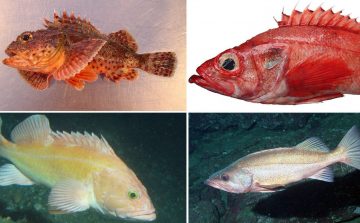
Rockfish make a remarkable recovery off California coast, prompting federal officials to raise catch limits
Locally caught red snapper was once a staple on Southern California menus and a vital part of the state’s fishing industry. But overfishing took its toll, resulting in federal restrictions nearly two decades ago to prevent their extinction. But with stocks rebuilding faster than anticipated, federal officials on Tuesday boosted catch limits by more than 100% for some species of rockfish in a move they said would help revive West Coast bottom trawlers and sportfishing fleets. >click to read<13:15
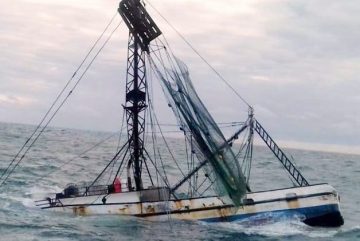
Five shrimp fishermen rescued off Isla Mujeres
A crew of five local shrimp fishermen were plucked from the sea Monday after their boat began to sink. The Secretary of the Navy of Mexico says personnel from the Fifth Naval Region at Isla Mujeres were called for a rescue mission after the five crew members required assistance when their shrimp boat quickly began sinking. The Kukulkan VI began to take on water while the crew were approximately 17 nautical miles (31 kilometers) north of Isla Mujeres. The Navy of Mexico responded to the emergency panic alert sent by those on board. >click to read<12:04
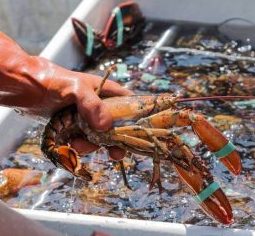
Lobster landings down, shore price record-setting for opening week
Shore prices were record-setting for the opening week of the commercial lobster fishery in southwestern Nova Scotia, going from $6 to $6.25 per pound on the first landing day (Dec. 2) to $8 by Friday (Dec. 7), but on the bad side the prices were driven by an estimated 30 to 40 per cent decrease in lobster landings compared to the same timeframe last year. “The price is phenomenal,” said Lockeport buyer Mike Cotter, owner of Cotter’s Ocean Products Inc. “It’s unreal. It opened at $6, $6.25 and now today it’s $8. That’s a big price.” >click to read<10:26
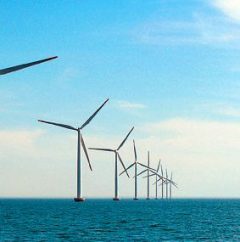
Fishing industry says it doesn’t endorse Vineyard Wind’s ‘consensus plan’ for transit lanes
The fishing industry said Vineyard Wind distorted its words on Monday. A release by Vineyard Wind said the offshore wind company endorsed a “consensus” transit corridor plan supported by the fishing industry, but multiple people within the fishing industry told The Standard-Times they didn’t support or endorse the plan. The consensus within the industry is a 4-mile wide transit lane. Vineyard Wind’s endorsed plan called for 2-mile wide corridors. “It’s frustrating for the fishing because we’re coming with options even though we’re losing tremendous ground and we’re losing a lot of traditional transit (lanes),” said Meghan Lapp, a fisheries liaison for Seafreeze Ltd. “But we’re still trying to come to the table to make something work and in light of this press release, it doesn’t really seem like it’s being reciprocated.” >click to read<09:46
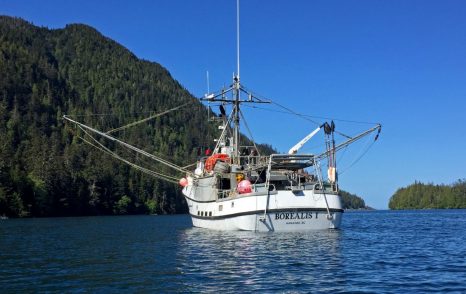
Why Does Halibut Cost So Much?
Dishes fly across the galley. Water gushes through the scuppers and onto the deck. Five crew members on the 17.5-meter commercial halibut boat Borealis I walk like drunkards, holding onto anything stable. “We’re going to get bounced around a bit,” Dave Boyes, the boat’s captain and owner, deadpans. My day started at first light, about six hours ago, watching the crew let out 2,200 galvanized circle hooks laced with chunks of pollock, squid, and pink salmon to soak across 13 kilometers of ocean bottom. Then, we ate breakfast and rested in cramped, cluttered bunks while the boat bounced on 1.5-meter waves and—below, in the cold unseen depths—the hooks sunk deep into the lips of the predatory halibut. Now, the crew readies for battle, cinching rubber rain gear and running crude gutting knives across electric sharpeners—a portent of the bloodshed to come. When Boyes toots the boat’s horn, it’s game on. >click to read<08:45
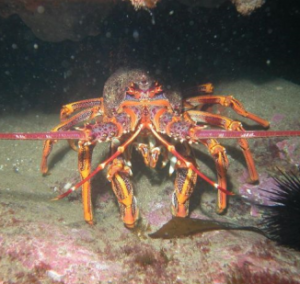
‘Tantamount to theft’: WA fishers sound off about government rock lobster intervention
Fishers have called the state government’s plans to take ownership of a significant chunk of WA’s rock lobster industry everything from the “next WA Inc” to “a great plan” set to solidify the industry’s future. After Fisheries Minister Dave Kelly formally announced the government’s “development package” on Monday, the Western Rock Lobster Council of WA was quick to sound off about their concerns with the proposal. >click to read<23:24
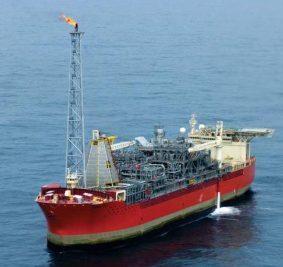
Husky spill consisted of two fluid releases, investigation reveals
Husky Energy’s investigation into the massive fuel spill at the SeaRose vessel last month has revealed there were actually two fluid releases containing a mix of oil, water and gas. While the final report has not yet concluded exactly what happened to allow the 250,000-litre spill — the province’s largest — from a failed flowline connector near the South White Rose Extension drill centre, about 350 kilometres east of St. John’s, on Nov. 16, the company provided an update Monday as it continues to delve into the incident. >click to read<21:10
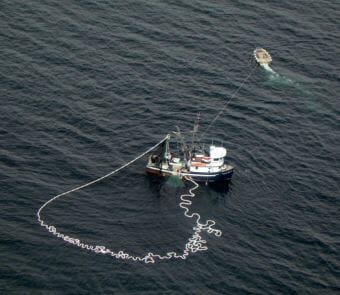
New warm ocean Blob could affect Southeast winter weather, fisheries
The Blob could be back. Or, maybe it’s the Son of Blob. Either way, the warm water phenomenon first discovered in the North Pacific five years ago is slowly reemerging in the Gulf of Alaska. Although it doesn’t appear to be as strong as the original, it could still affect weather and fisheries in Southeast Alaska. Nick Bond is the Washington state climatologist who coined the name “the Blob” when he discovered the original patch of warm water emerging in late 2013. “For the Gulf of Alaska, I would say it’s mostly, if not entirely new,” Bond said. “It might be a little bit of a different story for the Bering Sea.” >click to read<
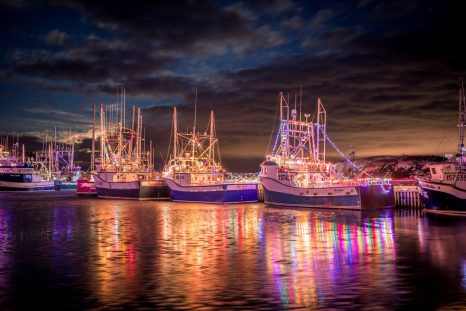
Be merry and bright with 20th annual Port de Grave boat lights
It’s become a Christmas tradition in Port de Grave: lighting up the boats in the harbour, and wading through the thousands of people who come to see them. “We figure between 30 to 40,000,” Joyce Morgan, co-chair of the Port de Grave Annual Boat Lighting, says of the number of visitors each Christmas season. This year’s lighting happened on Dec. 7, with crowds of people showing up to watch the harbour light up. >click to read<18:38
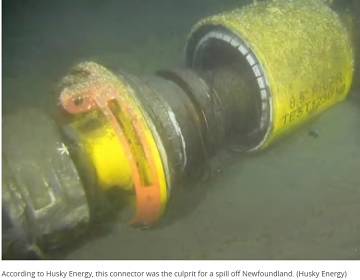
Not Good Enough – Husky ‘deeply sorry’ for oil spill last month off Newfoundland
Husky Energy says it is “deeply sorry” for back-to-back spills that sent a total of 250,000 litres of oil, water and gas into the ocean last month, and says it is making changes to prevent anything similar from happening again. The two spills occurred within an hour of each other on Nov. 16, the oil giant revealed in a statement Monday. Husky’s preliminary investigation is now in the hands of the Canada-Newfoundland and Labrador Offshore Petroleum Board (C-NLOPB), after the company submitted its preliminary report on Friday. The spill happened when a flowline connector failed near the South White Rose Extension drill centre, about 350 kilometres east of St. John’s, according to a media release. >click to read<15:58
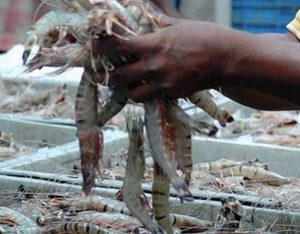
Seafood exporters worried as US plans to regulate imports
The new Seafood Import Monitoring Policy (SIMP) regulations of the US on shrimps and other marine products are giving India’s seafood sector the jitters as it sees a backlash on surging exports. Unless some effective steps have been taken by exporters, the move — which will be effective from January 1 — may impact 50 per cent of India’s shrimp production that is headed for the US. Seafood exporters have called for measures to strengthen the procedures for registration of aquaculture farms and fishing boats and linking them to certification to tackle traceability issues that affect clearance by health authorities abroad. >click to read<13:03






